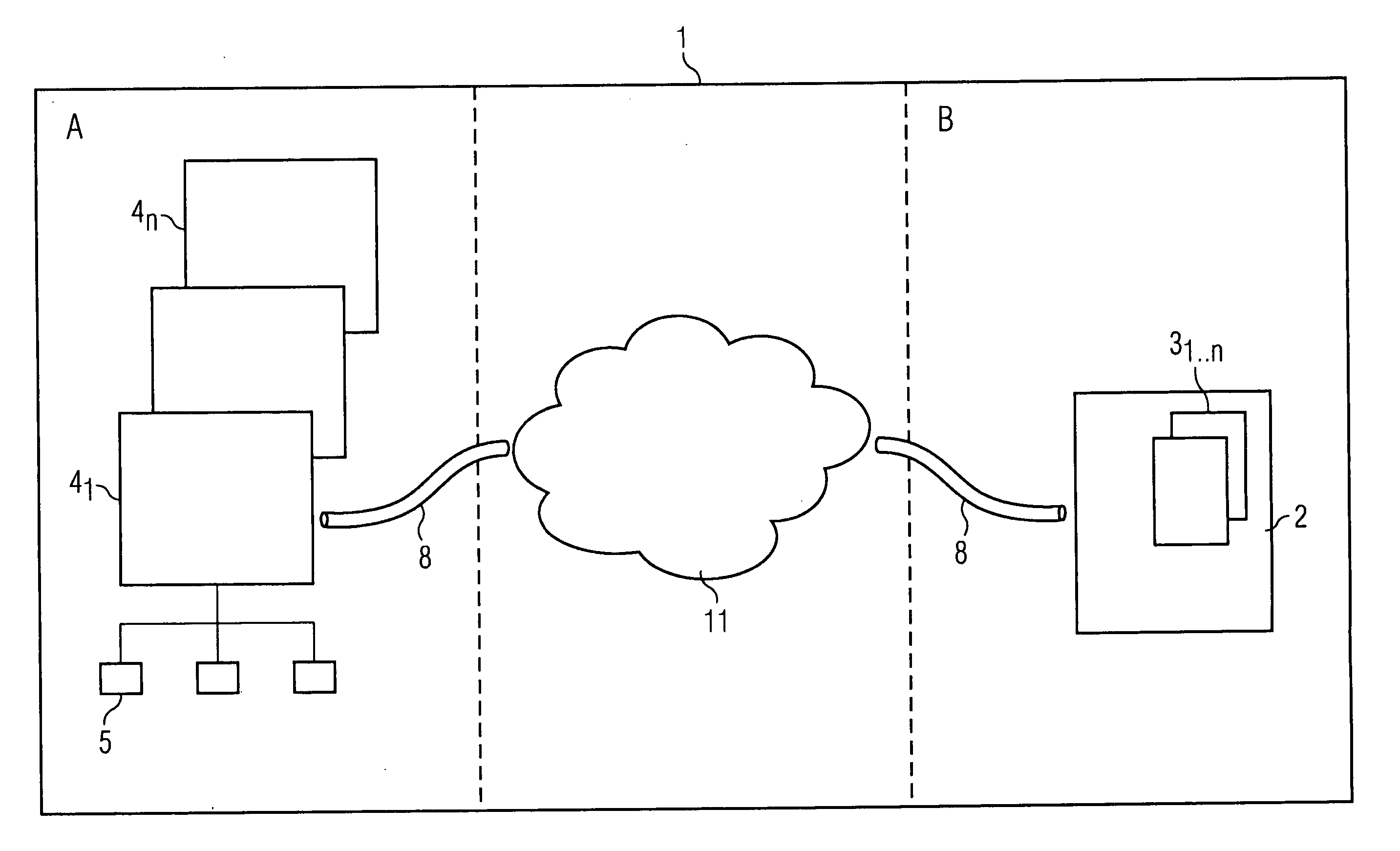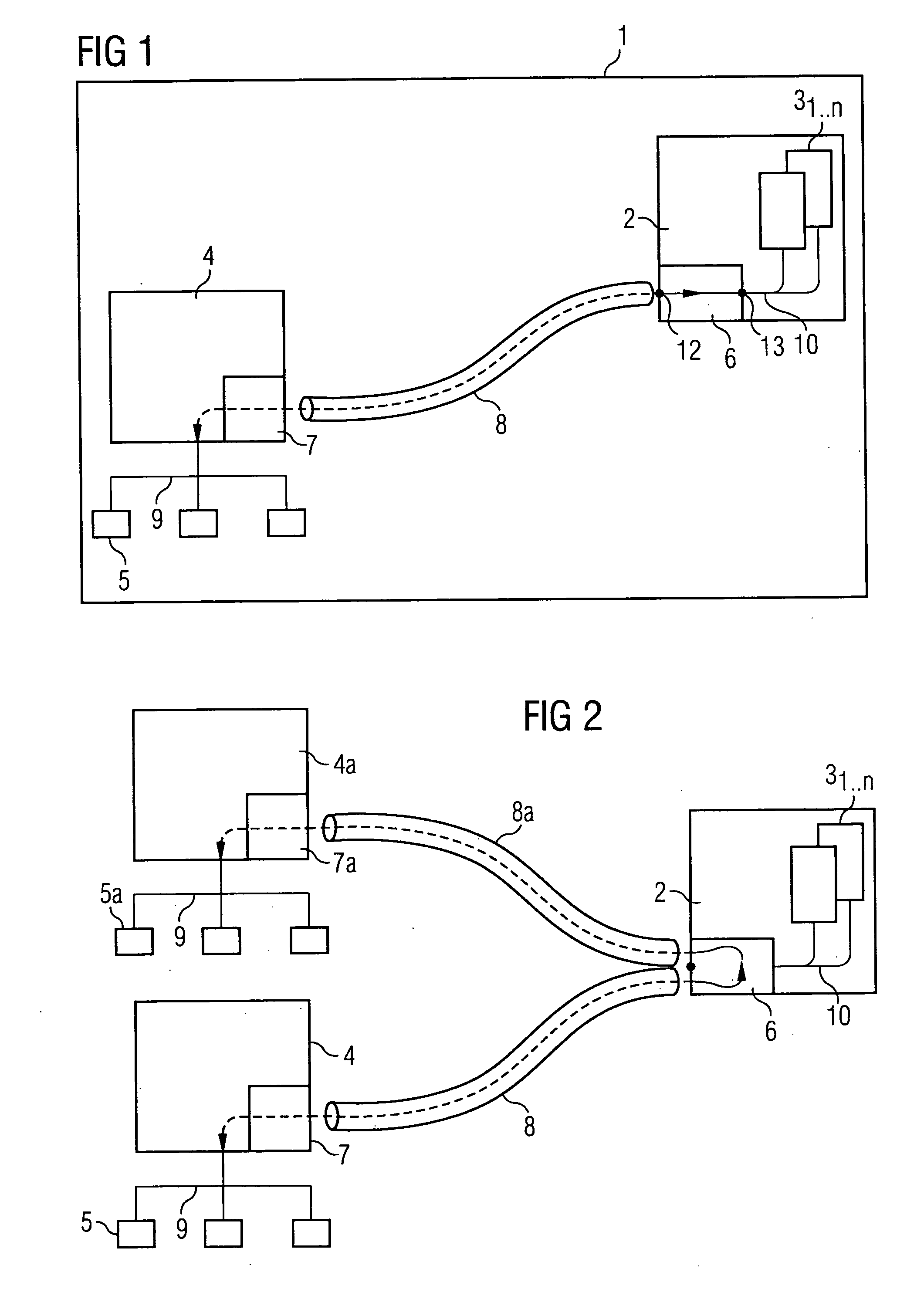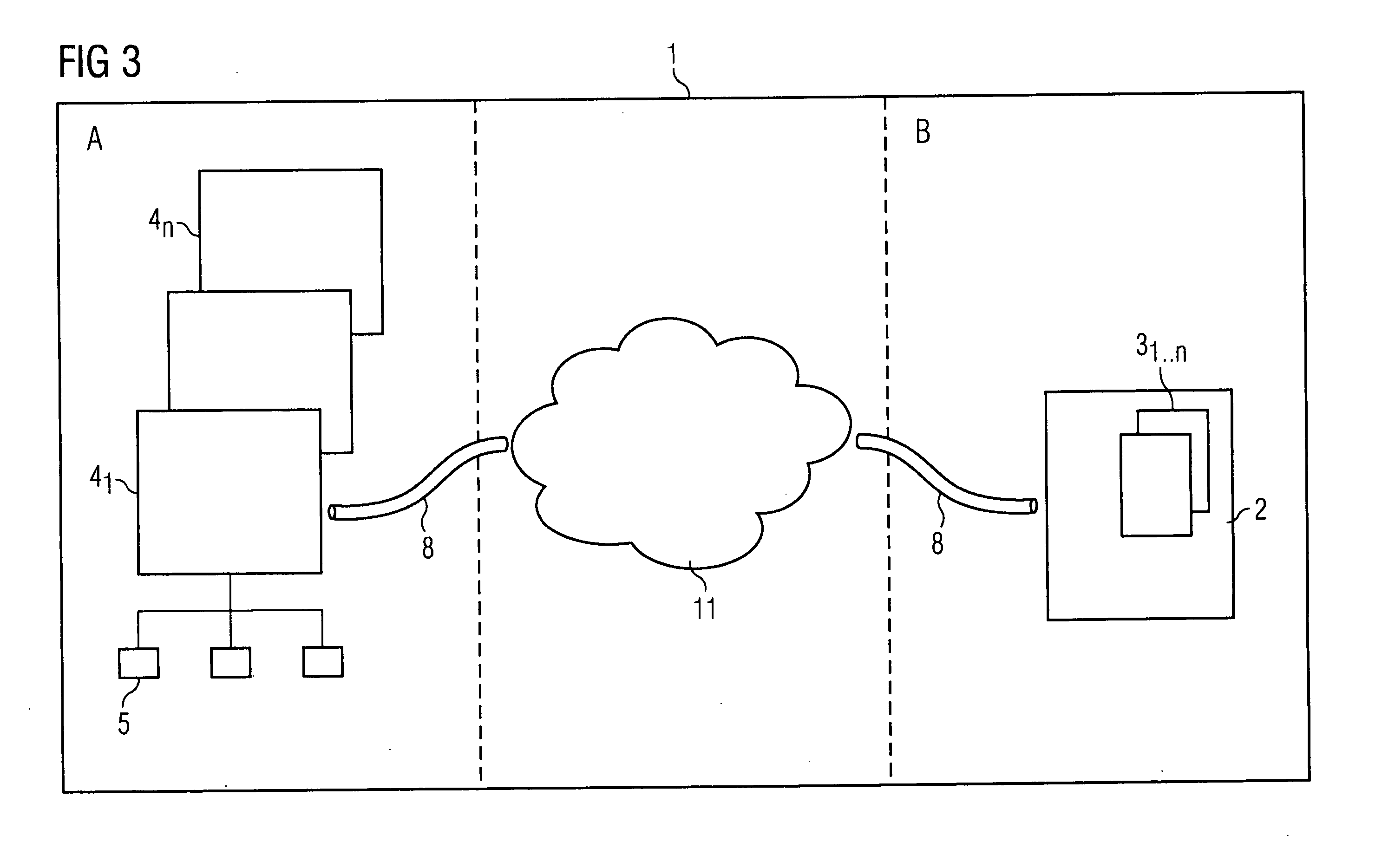[0006] The invention is based on the knowledge that the engineering systems currently employed for engineering within an automation
scenario are as a rule monolithic, which is to say are installed on a central
server and can only be operated there. In modern installations, characterized by increasing complexity, heterogeneity, and decentralization, it is however advantageous if the engineering systems can be operated from different locations or sites and if any process data or project-planning data can be accessed from said locations. In the proposed invention,
virtual process interfacing effected via an online
communication channel is for this purpose set up from the engineering system on a server to any automation devices that are addressable via clients. The proposed system thus enables an engineering system to be operated from any location within the system, including the accessing of process data and
diagnostic data. The optimized deployment of resources on the installation within the automation system is herein especially advantageous. The clients employed can be, for example, thin clients, since no applications have to run thereon themselves. The applications are instead installed on the server; they can, however, be used remotely online via the client, and the required data is also available via the
communication channel.
Engineering can thereby be performed significantly more variably and flexibly.
Virtual process interfacing via the online
data channel also makes distributed engineering possible in monolithic systems. Users only require an online access for data accessing and engineering. The system can also be operated from the client. The engineering system does not have to be located on the computer used by the application. Online access to the automation devices is provided by the communication channel by means of what is termed tunneling of communication data packets.
[0009] A further advantageous embodiment of the invention is characterized in that the communication channel is embodied as a
Remote Desktop Protocol for transmitting data to one or more participants in realtime over one or more separate virtual channels. Using Microsoft's
Remote Desktop Protocol (RDP) enables data packets to be sent efficiently and rapidly over the communication channel between a client and the server, thus substantially improving engineering and the accessing of the process data or project-planning data. Several data packets can moreover be sent over the communication channel by several users of the system simultaneously and mutually independently without the occurrence of negatively impacting interactions. The possibility of using several separate virtual channels for transferring data furthermore renders the system variable, flexible, and freely scalable. Any number of users (limited only by the server's capacities) can work simultaneously within the system on different clients.
[0011] A further advantageous embodiment of the invention is characterized in providing for the transmission of data in the communication channel over an
intranet and / or
the internet. There is thus no need to establish separate infrastructures for the proposed system such as special networks. An
intranet or, as the case may be,
the internet provided as standard can be used and the standard protocols employed therefor will be available for communication also. This will allow the system according to the invention to be implemented economically with no further expenditure requirements.
[0012] A further advantageous embodiment of the invention is characterized in providing for the transmission of data from the client using a
Remote Desktop Protocol over a
Wireless LAN (W-LAN). The clients used within the system such as, for instance,
programming devices, operator panels, diagnostic devices, and browsers of whatever kind do not require a cable connection directly. Rather it is the case that the data can be transmitted cordlessly over a W-LAN network. Using networks of this kind has the
advantage that users do not have to remain statically at one location but instead only need to stay, together with their client, within a specific area or periphery within which they are able to transmit data by means of a W-LAN. Employing a W-LAN thus permits greater user mobility on the installation.
[0013] A further advantageous embodiment of the invention is characterized in providing for the transmission of data using a
Remote Desktop Protocol from further data sources present in the system employing further standard protocols such as HTTP and / or FTP. Data reaching the system by way of other communication methods and networks can thus be sent within the system over the same communication channels. It is thus available to any user in the same way as the data of the automation devices connected to the clients. Universal access to all relevant data for the installation or for the automation system is thereby ensured.
[0014] A further advantageous embodiment of the invention is characterized in that the system provides for use across different sites. Distributed engineering by means of virtual access to process data and project-planning data is hence possible not only at one site within an installation; rather it is the case that cross-site access to all relevant data is also facilitated. The proposed system is hence eminently suitable for the engineering of decentralized automation systems. It is especially advantageous herein that the clients employed can be simple and need to have few resources. The applications are made available directly by the server. Remote maintenance or, as the case may be,
remote diagnosis is furthermore also facilitated by the possibility of accessing project-planning and process data on a cross-site basis. Experts, who may not be directly present on site, are able to access the relevant data from any location via the distributed system.
 Login to View More
Login to View More  Login to View More
Login to View More 


